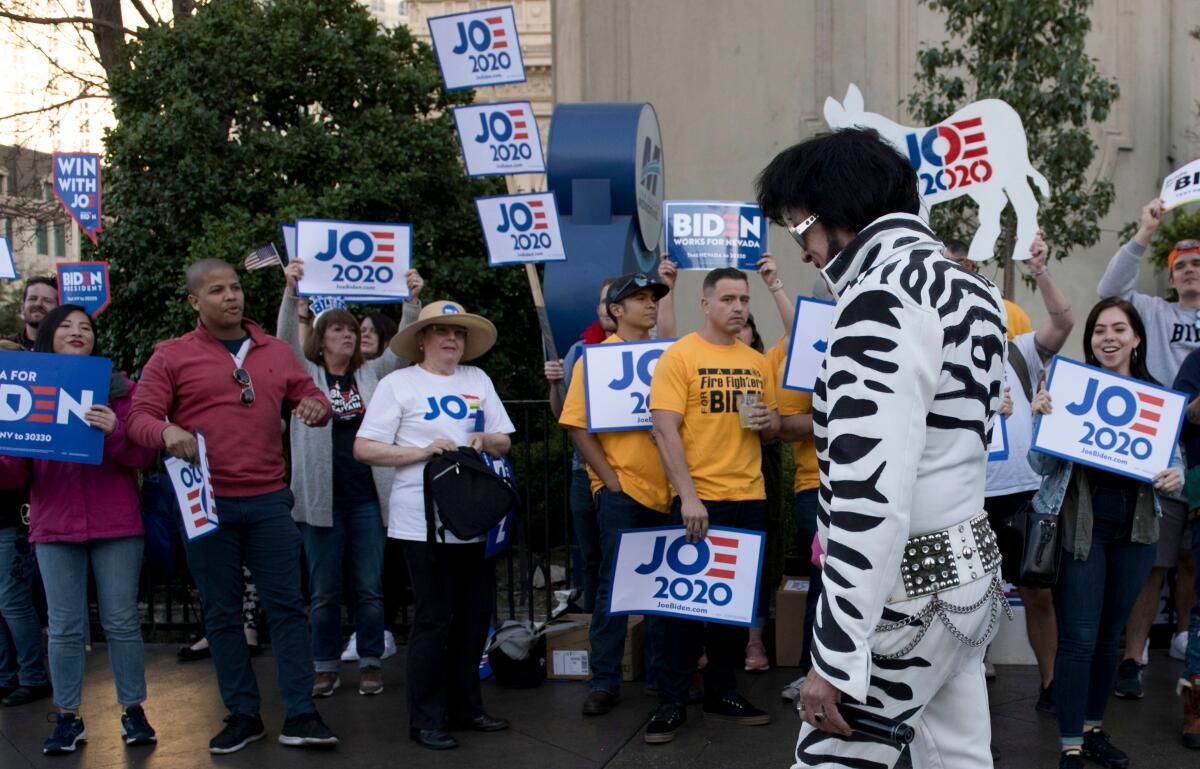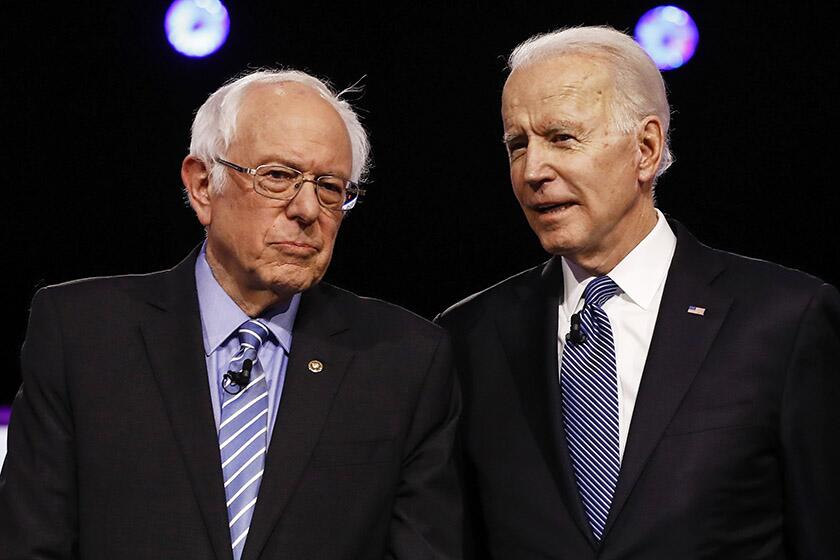It’s Nevada caucus day. So how does it work?

Nevada would like you to know it is not Iowa.
Beyond the obvious differences ‚ÄĒ one is cold and predominantly white, the other is diverse and predominantly warm ‚ÄĒ Nevada has attempted to learn from the mistakes of Iowa‚Äôs problematic caucuses.
Before the first-in-the-West caucuses on Saturday, Nevada’s Democratic Party abandoned the disastrous mobile app used by Iowa Democrats and instead will have precinct leaders enter results onto a Google spreadsheet calculator using party-provided iPads.
Caucuses are complicated even under the best of circumstances, but Nevada Democrats have introduced new wrinkles this year, including four days of early voting that will be combined with Saturday’s caucus tallies.
And although Democrats say they are are very confident that Nevada’s caucuses will go better than Iowa’s, they’re not promising immediate results, either. Democratic National Committee Chairman Tom Perez would not commit to releasing same-day unofficial results when asked by the Associated Press this week.
So when does voting start?
Caucuses started midday Saturday.
Early voting, however, started Feb. 15 and ran through Feb. 18. This year, Nevada introduced early voting so that Democrats who can’t devote an entire Saturday afternoon to caucusing can have their voices heard.
Nearly 75,000 Democrats voted early, according to the Nevada Democratic Party. (For context, 84,000 people attended the Nevada caucuses in 2016.)
For the early voters, there was no shuffling around to different corners of a high school gym as their neighbors tried to woo them, like in a traditional caucus. Instead, they filled out a presidential preference form ranking their top three to five choices. Those votes will be added to the total of the in-person candidate preferences, and they will only be realigned if their first choice isn’t viable.
Wait. Back up. Shuffling around in gyms?
Here‚Äôs how it works: At each caucus site, attendees will group together based on which candidate they support. The precinct leaders will then determine whether enough people support each candidate (in other words, if that candidate is ‚Äúviable‚ÄĚ). After the first round of caucusing, individuals who support a candidate who didn‚Äôt garner enough support will have 15 minutes to switch over, or realign, with a different candidate or decide to be uncommitted.
That sounds pretty simple
Sort of. The math is just a little more complicated than, say, in Iowa’s caucuses. In order to have enough support to win delegates in that state, a candidate needed to be backed by just 15% of the people attending the caucus.
But it Nevada, it depends. In precincts electing two delegates, the viability threshold is 25% of the total number of early votes and in-person attendees in the precinct. In precincts electing three delegates, it’s one-sixth of that total, and for precincts with four or more delegates it is 15%.
How many delegates are up for grabs in Nevada?
Nevada will send 36 pledged delegates to the Democratic National Convention. Twenty-three of those national delegates will be doled out based on the results from the four congressional districts. The rest ‚ÄĒ five pledged party leader and elected official (PLEO) delegates and eight at-large delegates ‚ÄĒ will be allocated based on the statewide vote. Only candidates who win 15% or more of the statewide vote will qualify for any of the PLEO or at-large delegates.
The first step, however, will be determining how many delegates each campaign gets to send to the county convention. Each precinct awards a set number of delegates to the county convention, and when results are released on Saturday (or after), they’ll be in terms of those county-level delegates.
The state‚Äôs proportional distribution of delegates means that the candidates with the most county-level delegates on Saturday might not have the most delegates at the national convention. In 2008, Hillary Clinton won 51% of the county-level delegate count to Barack Obama‚Äôs 45%. But because Obama‚Äôs support was spread across the state ‚ÄĒ including rural areas ‚ÄĒ he ended up beating her in the national delegate count.
Democratic officials and presidential campaigns in Nevada are desperately hoping to avoid another caucus meltdown like the one this month in Iowa.
Who can caucus?
Anyone registered as a Democrat who will be 18 years old by the November general election can participate in the caucus. Same-day voter registration is available. Nevada is continuing its tradition of offering caucus locations on the Las Vegas Strip for shift workers.
Are Republicans caucusing, too?
No. The Nevada GOP decided last year to cancel its caucus and will vote to bind its delegates to President Trump, who held a rally in Las Vegas on Friday.
Who’s on the presidential preference card?
There are 13 candidates for Democrats to choose from on the card, but six of them have dropped out since the presidential preference card was finalized last month.
The candidates on the ballot and still in the race are: former Vice President Joe Biden, former South Bend, Ind., Mayor Pete Buttigieg, Rep. Tulsi Gabbard of Hawaii, Minnesota Sen. Amy Klobuchar, Vermont Sen. Bernie Sanders, former hedge-fund manager Tom Steyer, and Massachusetts Sen. Elizabeth Warren.
Former New York Mayor Michael R. Bloomberg is not on the ballot. The billionaire skipped the first four nominating states to invest in the contests starting March 3, also known as Super Tuesday.
Joe Biden is the likely Democrat nominee to face President Trump now that Bernie Sanders has suspended his presidential campaign. Meet the candidates.
What happens if a candidate requests a recanvass or a recount?
If one of the presidential candidates wants a recanvass or a recount, they have until 5 p.m. Pacific time on Monday to write to the Nevada Democratic Party with a request.
Unlike in Iowa, where candidates could (and did) request a partial review of the results, Nevada Democrats will only review all of the statewide results. Requests much show evidence of errors that would affect the allocation of at least one national
delegate. A recount would be completed by March 6.
California’s primary election is March 3, 2020. Here’s what you need to know about the presidential candidates and voting on Super Tuesday.
More to Read
Get the L.A. Times Politics newsletter
Deeply reported insights into legislation, politics and policy from Sacramento, Washington and beyond. In your inbox three times per week.
You may occasionally receive promotional content from the Los Angeles Times.











